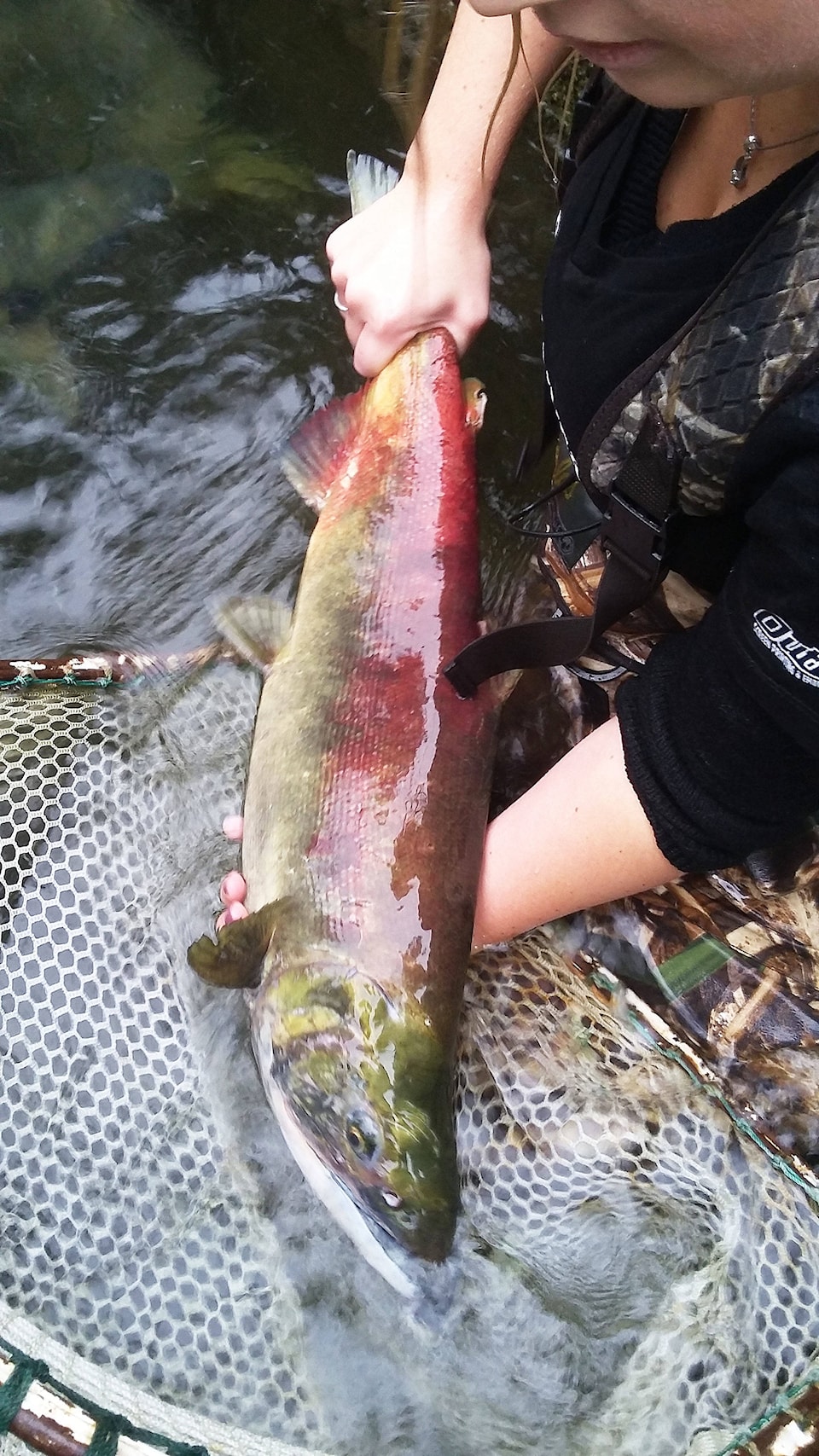The Alouette Lake reservoir has filled up and more or less reached its normal levels, says the Alouette River Management Society.
“It’s back to what it should have been in April,” Greta Borick-Cunningham, with the society, said last week.
Borick-Cunningham said that the level had reached 121.9 metres on Wednesday, May 22. That level allows juvenile sockeye – raised in the lake as part of the efforts to re-establish a sockeye salmon run – to escape down the spillway gate and into the South Alouette River, then out to the Pacific Ocean.
While the levels have risen, it still means that the fish were delayed a month in getting down the river. Usually, the juvenile salmon in the river by April 15.
The group had worried that low levels in the lake earlier this year would have hurt the fish. It’s not known if being delayed a month will affect survival chances of the salmon, Borick-Cunningham said.
Usually, between 30,000 and 60,000 young sockeye escape into the river each spring, with the hopes of returning in four years to the base of the Alouette River dam, where they are captured and trucked around the dam and dumped back into the lake to spawn.
The spillway gate should remain open until June 15.
Last year, 15 sockeye returned to spawn.
ARMS has been releasing juvenile sockeye into the river for 11 years with the hopes of rebuilding the run that was extinguished in the 1920s, when construction of the Alouette dam blocked fish access to the lake.
The target level between mid-April and mid-June is at or above 121.85 metres, and from mid-June to mid-July it is 122 m.
ARMS president Cheryl Ashlie acknowledged B.C. Hydro is permitted to bring the water level as low as it did.
But Hydro did not bring the water levels up quickly enough to meet the April 15 target, she added.
Hydro said the low water levels were caused by the demand for electricity and dry weather this past winter.
“High electricity demand due to record cold temperatures in February and a dry February and March has resulted in low water levels at many of our reservoirs, including Stave and Alouette,” Kevin Aquino, with Hydro, said previously.
According to Environment Canada records for the Pitt Meadows weather station, there was 42.9 mm of rainfall in March. That compares to 147 mm in March 2018, which was a dry year.
pmelnychuk@mapleridgenews.com
Like us on Facebook and follow us on Twitter
